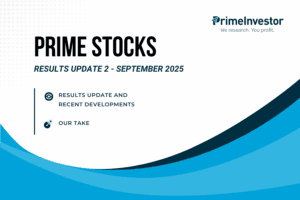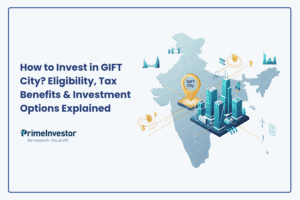A recent query we received from a customer concerned Aditya Birla Sun Life Frontline Equity. Our MF Review tool throws up a sell on this fund. The questions raised were:
- Why, since it was a fund that had been delivering returns and was considered among the best funds and was highly rated
- If one had to keep reviewing and exiting funds, did that mean mutual funds had to be managed in a way similar to stocks? These funds were not poor performers at the time of investing, so it is not a question of having got into a risky or bad fund at the outset
- What if I sell and the performance picks up?
- Given the share the fund accounted for in the portfolio, exiting is tough.
We have had similar questions before, especially the last one. And if you use our review tool, you will see similar opinion for many iconic large-cap funds. Many of you may relate to these questions and agree with the reasoning. So we thought our responses might interest you too. Here it is.

Relative performance
Here’s how we give buy-sell-hold calls: As a first step we consider its Prime Ratings (because that’s the first measure of performance), the way ratings have changed and performance changed, where the fund is slipping or gaining and why, the extent and sustenance of outperformance or underperformance, and finally, market potential. All of this calls for understanding portfolio moves and portfolio potential and not just performance.
With that, let’s take the large-cap category. Performance of funds in this category have been getting steadily worse over the years. We have discussed the faltering performance of this category, in our very detailed articled here. To quickly summarise:
- One, the number of funds beating the Nifty 100 TRI is going down.
- Two, the margin by which funds beat benchmark is shrinking
- Three, the proportion of times funds beat the benchmark is also going down
What we’re saying here is that large-cap funds are not able to deliver better returns than the Nifty 100 TRI – the basic benchmark for any large-cap fund. In such a situation, why should you continue to hold active funds that do not fulfil this primary mandate?
Consider Aditya Birla Sun Life Frontline Equity. Its performance has been deteriorating over the past three years. If 1-year returns are taken and rolled daily, the fund has been behind the Nifty 100 TRI all the time since mid-September 2017. If 3-year returns are rolled daily, the fund has been lagging the index since 2018 and beaten the index just 32% of the time over 6-year period. Franklin India Bluechip, similarly, has beaten the Nifty 100 TRI only 24% of the time rolling 3-year returns over a 6-year period.
Simply put, what you should know is this – while the fund is generating returns for you, you would be earning far more by simply investing in the index itself (and for lower cost) or in another fund or category that beats the benchmark. There is significant opportunity loss. So it is not that you are not earning returns, it is that you could be earning much more. Fund performance is always relative. And in this case, you could be earning much more by passive investing – mimicking the market and at a lower cost! To put it in perspective, see the table below. It shows the differential between a SIP of Rs 5,000 run from the start of 2014 (amounting to a total investment of Rs 385,000) in popular large-cap funds and the Nifty 100 TRI.
Tiding over underperformance
You can argue that one should hold for the long term. But remember that continuous underperformance will be a drag on your returns. To recoup this, you will need almost all of the below points:
- You need a very long holding time. If you are investing with say a 5-6 year horizon – which can be done with large-cap funds – and the fund lags for three of those years, there is not much time to recover.
- Over such time, the fund should actually turn around
- And the markets need to help the fund in such a recovery. It always takes one good rally for many a fund to bounce back.
The scenario can be different if your horizon is say 10-15 years. But the question still is – how long will you wait for improvement? You need to buy and hold equity. This is not the same as buy and hold funds. There are good funds that slacken in performance and poor funds that pick up. Holding a poor performer for a long time can hurt your returns. We have discussed this argument of buy-and-hold funds before and would urge you to read it now. See the section on ‘Difficulty in selling’ if you have such long-term horizons and wish to wait it out.
The problem is compounded when as a category, either because of the universe of investment options or due to having smarter indices, many active large-cap funds underperform indices. This is something that large cap as a category has been struggling to deal with for the last 3 years.
Portfolio churn
The next worry is always that a fund you exit can recover later and you would have unnecessarily churned your portfolio. We have two points to make here:
- One, it is not a frequently occurring event. A quality fund that has been consistent before will take a while before it moves to a sell. It usually moves to a hold, where you avoid investing more into the fund buy continue to hold what you already have. So you are unlikely to have to sell funds every other month or year. There are large-cap funds, which are or were popular, but which are not sells in our review but just holds.
- Two, if you move into another good fund, it should not matter that the fund you held before suddenly recovers. As long as your current fund suits your requirement and delivers better than the market, you are not losing out. So there is no opportunity loss in exits provided you keep your portfolio well reviewed.
And please note that we are not talking of portfolio churns motivated by higher commissions by agents. That is best judged by your own self.
What if the new fund you buy slips in later years? Let’s say you substituted ABSL Frontline Equity or Franklin Bluechip with one of our Prime Funds and this fund lagged. Again, it is not an immediate sell. As explained above, we look at the ability of a fund to sustain performance before giving calls – just as we may not reverse ABSL Frontline into a buy the moment it turns around.
This has happened with many funds – for instance, JM Large Cap is a top performing fund over 1 and 3 year periods now. We have not immediately shifted our call on this fund. What we look for is sound evidence of a performance shift happening and its sustenance. JM Large Cap’s better showing is largely on account of holding nearly a third of its portfolio in cash.
So if a Prime Fund does slip to depths of underperformance, yes, we will course correct and change its call at some point. We do this after reviewing not just performance but the portfolio potential. But these moves won’t be drastic.
This does call for an annual portfolio review on your part. You can simply use the MF Review Tool once or twice a year to know where your funds stand and what action you should take.
Use Prime Funds to ensure that you do not start investing in an inconsistent fund – and since we track and update the Prime Funds, we’ll tell you if there are changes needed even if you do miss out on a portfolio review.
If you do not want to run this risk or effort, simply stick to index funds.
Difficulty in selling
In the MF review, what we aim to do is to alert you on whether your fund is performing well, performing poorly, or is just about average. When we give a sell, we mean that the fund’s performance has slipped or has been poor for a prolonged period of time. Our views are not based on its position in your portfolio, what proportion you hold or your tax status. What we do is a review of the product. You need to use it to review your portfolio.
So you may be loath to sell your fund if it accounts for a big part of your portfolio, or you do not want to sell in these markets, or you want to wait for a turnaround. In these circumstances, you can do any of the following:
- Decide not to act now: If you think the fund’s return in your portfolio is not bad (based on when you entered it), you could take your own call on continuing to hold it and simply avoid investing more in it. And if it is not part of your next 3-5 year goal, you could well take this approach.
- Sell in phases. Break the investment up into smaller tranches and exit gradually over a period of 1-2 years. This is an option for those of you who are wary of selling in volatile markets, when it is a large part of your portfolio, or for taxation. When we say sell, we do not mean you have to entirely exit the fund immediately, especially in equity.
See also : Our rating of the best Index Funds India






23 thoughts on “Why we’re avoiding some of the iconic large-cap funds”
Hi Bhavana, I own Aditya Birla Frontline in relatively large quanity. (of 20 Lakhs). though this has run up in last year or so, I may like to redistribute to my other MFs – Flexi, Focussed, International, (and may be add a small cap which is missing)
I am developing a cold feet, looking at large sum. It is fear of unkown, (and offcourse taxes)
how do you suggest me to go ahead.
As explained in the article, we have a sell call on the fund. You can choose to remain invested if you believe the fund is still returning well for you. You can also exit gradually to minimize the tax impact, or exit when you rebalance your portfolio or need proceeds to meet any expense. – thanks, Bhavana
Hi Bhavana
Thanks very much for this article…which has become more relevant in view of the recent peaks..
I had been investing through SIP Rs.5000/-pm in ABSL Frontline Equity Fund from Nov2011 onwards and continued till date…This was a FIVE star fund for a long time…and always the advise was ….MF is for long term…do not exit unless you are near your goal !!!!…( My goal was retirement which is another 5 years away)..Now sometime in April2017..let me take an exact date 27th April 2017, the SIPs I had invested was giving an IRR of 18%….A fantastic return…but keeping in mind the long term..I have not redeemed the fund and diligently continued the SIPs…Now come 11th Nov2020..even when the sensex is peak, the IRR in this fund has dropped to 10%…So was it a mistake NOT redeeming the funds invested in 27th April2017???…I would have got greater return, even if had redeemed the fund in April2017..ie “Booking profits” as one would call it and reinvesting in a debt fund… But all this is is hindsight knowledge…In April2017, how was I to know that ABSL frontline would perform badly and now is the time to exit???…Similarly as of date Axis Blue Chip, SBI Small Cap are giving 15% plus IRR…but we are not exiting since these are now the FIVE star rated funds…Hence what is the correct MF exit strategy or redemption strategy ???
Our goals would have assumed 12% return in MF;s…but performance of the erstwhile stars like ABSL Frontline, Franklin Prima plus, HDFC Equity, HDFC Top100 are disappointing to say the least !!!!
Hello sir,
Yes, hindsight will tell you if performance was at a peak or not. However, if you review your portfolio every year, it will go a long way in allowing you to weed out poor performers, and booking out of an asset class that has run up. Please read the two articles linked below. Both will be useful:
https://www.primeinvestor.in/how-to-review-your-mutual-fund-portfolio/
https://www.primeinvestor.in/how-to-rebalance-your-portfolio/
Thanks,
Bhavana
Hi Team,
Quick question/thought – If I redeem an underperforming large cap fund (in which I have been investing via. SIP), would it make sense to invest the redeemed money in lumpsum in any prime fund? (Considering rupee cost averaging of that money has already happened in underperforming fund). Or one should still invest in new fund via. SIPs?
Thanks.
Switching from Equity to equity means you are staying invested but only changing funds. So SIP is not needed. However, most investors get spooked if the market falls after they switch (not knowing that their original investment may still be in profits). So if you feel so, SIP is fine. otherwise there is no market timing risk when switchign between equities. Vidya
Thanks, Vidya. Appreciate the quick response.
Could you please elaborate on “not knowing that their original investment may still be in profits”? Didn’t understand how this is true if market falls after the switch?
Thanks.
SO you buy fund A and earn 10% in 5 years. You cost is C and current value MV. You decide to sell it now because it is underperforming. You swithc the entire amt to Fund B. The amount invested is MV (new cost for fund B but your cost is still C). When market falls you have a loss in Fund B. You think you should not have done lumpsum and done SIP and you ill-timed the market by doing lumpsum from one equity fund to another. There are 2 facts you miss: one, you may not be in loss if you consider that your original investment was only C and not MV. Second, the fall would have happened (when market fall) whether you were in Fund A or Fund B because the market fell. In essence, there is no risk of ill-timing market by switching lumpsum within the same asset class. Hope this helps. thanks, Vidya
Thank you so much, Vidya. This is very helpful. One last question on this – Is there a way for general investors to be able to systematically track the original cost C even after investing in new fund? Are there such tools available from transaction platforms which can capture this nuance? Believe this is a good metric to track, but would be very cumbersome for layman to track this in spreadsheets themselves.
It simply involves taking the earlier fund transaction hsitory in an excel and doing your XIRR with current value of new investment. thanks, Vidya
Thank you, Vidya.
Hi Bhavana
Thanks. Right time to switch. The NAV is lower than Jan 31, 2018 and hence there is no capital gains tax. Use the strategy suggested by Anand above. Parallel switching helps avoid sudden movements in market.
Btw, which Index fund is suggested? Nifty 50 Index fund is cost effective (TER of 0.10%) and is a good substitute for ABSL Frontline, IMHO.
Hello sir,
Could you please write to us from your subscriber id? We prefer this route for fund-specific queries.
Thanks,
Bhavana
Any changes required on ABSL Equity?Regards,
Hello sir,
Please use the MF Review tool for our view.
Thanks,
Bhavana
Yes, I too have been doing similar way to get rid off my low performing equity mfs (Ex.Large cap with Index), but not across equity – debt / debt – equity
Excellent Piece on not holding laggards. Hopefully someday SEBI will tweak the expense ratio structure to have hurdles in terms of performance to make fund management more dynamic and have companies take more ownership.
However, if say one has a Rupee Cost Average going on in one of these funds; how do you recommend going about it ? Shall one incur the exit load of the previous 12 months and shift the Scheme or withdraw monthly from one scheme and put it into the other recommended scheme on a monthly basis ?
Hello sir,
Thanks 🙂 If you’re likely to incur exit loads, you can hold until you are out of the exit period. As we’ve said in the post, you don’t need to exit all at one time or even immediately. No reason to unnecessarily pay exit load! So exit in phases, and as and when you redeem, simply invest in the new fund.
Regards,
Bhavana
Thanks tai, This was a much needed article. I & many others were waiting curiously for your research & views on this largecap category. All of us will be benefited from your research & hardwork. Thanks once again tai.
Thanks, sir! Regards, Bhavana
Dear Bhavna,
Thanks for ABSL Frontline Equity explaination.
You are doing a fantastic job
Keep it up
Thanks, sir!
Regards, Bhavana
Good article. My strategy to replace equity funds in my portfolio is simple – do it in parallel rather than in sequence. Let’s say you want to replace fund A with fund B. Take some surplus from your cash / debt allocation. Sell a specific amount from fund A. On the same day, buy the same amount from fund B. The money from redemption of fund A will hit the bank account on T+3 days. Repeat the action of selling fund A and buying fund B until you completely get out of fund A.
This ensures that our overall asset allocation remains intact. We also don’t miss out on major market movements that can happen if we do this sell A -> buy B sequentially.
Comments are closed.